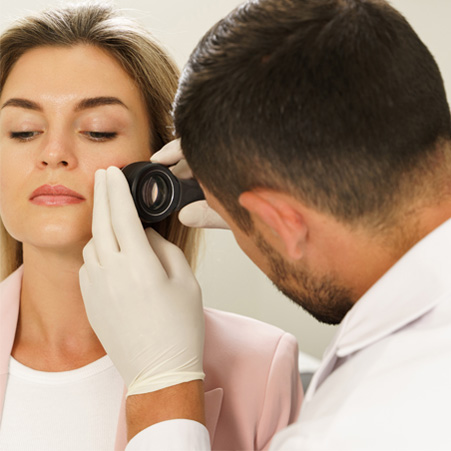-
Basal Cell Carcinoma (BBC)
Basal cell carcinoma is the most common type of skin cancer. It appears as a small red, pink pimple that will continue to grow. It has various patterns of growth and can spontaneously bleed. It can be effectively treated with many different options including liquid nitrogen, excision, Mohs Micrographic Surgery, and superficial radiation treatment.
-
Squamous Cell Carcinoma (SCC)
Squamous cell carcinoma( SCC) is a type of skin cancer that appears as a scaly red/pink spot that does not appear to go away. These can grow quickly and spread if not detected early. SCC tends to occur in those who have had years of sun exposure and/or tanning bed use over an extended period of time. It can be especially dangerous in patients who are immunosuppressed. Early detection can be treated with Liquid nitrogen, excision, Mohs Micrographic surgery, and superficial radiation treatment.
-
Malignant Melanoma
Malignant melanomas are a type of skin cancer that is derived from the pigmented melanocytes in your skin. It can affect a patient of any skin color and can be metastatic if left alone for several years. Early detection is very important in the treatment and cure rate for this type of skin cancer.
There are 5 key aspects to look for when looking for a melanoma or dysplastic growth:
- A - Asymmetry, appears when one side of the lesion does not appear like the other.
- B - Border becoming irregular
- C - Color, various colors noted within the lesion
- D - Diameter, the growth of the lesion is greater than 6 mm in size
- E - Evolution, the lesion growing, changing, or evolving.
Treatment for any type of melanoma is surgical intervention. These tumors have a great recovery rate when caught early and treated.
-
Actinic Keratosis
Actinic keratosis are pre-cancerous lesions that appear to be red/pink scaly lesions. Usually, these are easier to see than to treat and tend to develop due to chronic sun exposure. As a small percentage of these can develop into skin cancers, it is important to treat them early.




